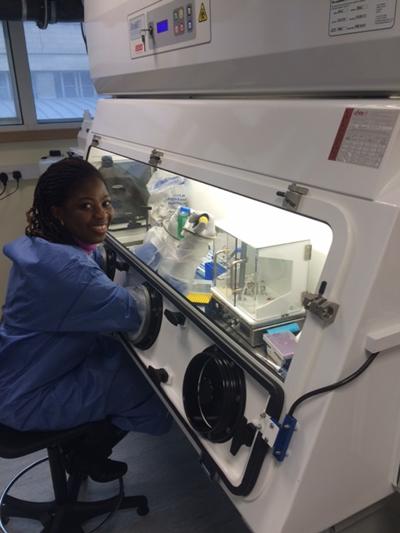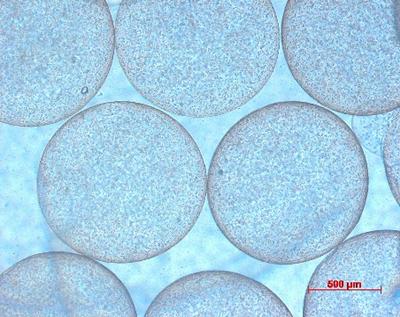Pyrazinamide is an antibiotic currently used in the treatment of tuberculosis. When a patient is given this treatment, it kills the tuberculosis. However, it was noticed that in the lab, pyrazinamide DOES NOT kill tuberculosis bugs in a petri dish.

The project will be using microsphere technology which replicates conditions in the human body, to explore new ways to kill the TB bug.
Working with Dr Paul Elkington, from the Faculty of Medicine at the University of Southampton, who leads the project, Dr Suwan Jayasinghe at the Department of Mechanical Engineering UCL, has designed a technology consisting of a bioelectric spraying system which passes human blood cells through an electric field to generate 3-dimensional spheres with great precision and without damaging the cells. The spheres can be studied for up to 3 weeks with the cells still intact.
Dr Francis Drobniewski at the Faculty of Medicine at Imperial college is a key collaborator and will be providing different drug-resistant tuberculosis strains to be tested in the system.
Dr Elkington takes blood cells from healthy donors and infects them (the cells) overnight with tuberculosis, ready to be passed through the sprayer to be formed into spheres. These spheres mimic conditions in the human body. Dr Elkington and his research team can then study the survival of tuberculosis in the spheres when exposed to standard antibiotics and also to new agents to understand the best ways to kill TB.
WATCH: a twenty second film
In the film we see human blood cells that have been infected with TB and then suspended in alginate. You can see them being injected through the bioelectrosprayer and dropping out of the nozzle. The action of the bioelectrospray has formed them into microspheres about 0.5mm across (a pinhead). When they fall into the calcium chloride, they cross-link, forming stable spheres. Thus stabilised, the spheres can last three weeks during which time the scientists can study the interaction of the TB bacteria and the host blood cells and investigate new approaches to overcome emerging drug-resistant strains of TB.
.png_SIA_JPG_fit_to_width_INLINE.jpg)
When spheres infected with TB are put in a petri dish, pyrazinamide is easily able to kill the tuberculosis. So mimicking conditions in the human body makes a huge difference to test results. Clearly, if pyrazinamide had been tested using the current methods of testing, it would not have been identified as an effective medicine and so this science is useful for allowing us to find other drugs with similar actions. For the next 2 years, we will test the technology on different drug-resistant tuberculosis strains and with new emerging antibiotics.

This project 'Investigating multi-drug resistant tuberculosis in the 3-dimensional bioelectrospray cell culture model' is funded by the MRC: Tackling AMR Theme 1: Understanding resistant bacteria [MR/N006631/1]
Where next?
Our next plan is to refine the testing capability of the microsphere system by combining with microfluidics research at the University of Southampton so that we can vary drug concentration over time to mimic changes that occur in a patient after taking tablets.
Read about this successful pump priming project on the 'Novel engineering approach to tackle tuberculosis' webpage. This has further developed in Global-NAMRIP into collaborations with the Africa Health Research Institute (AHRI) and the Indian Institute of Technology (IIT) Kharagpur, India, in projects which links the 3-D modelling and microfluidic at Southampton with the AHRI and IIT Kharagpur.